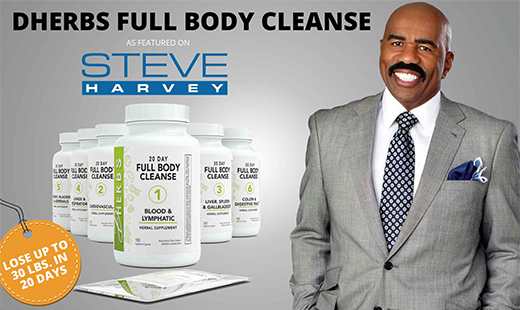Originally, chewing gum was made from tree sap but today’s commercial brands are loaded with harmful ingredients and chemicals.
The modern day chewing gums are made of four major ingredients including synthetic rubber, plastic, sugar, and coloring (dye). Modern day gums are produced from synthetic polymers such as styrene-butadiene rubbers and polyvinyl acetate. The final product is composed of 60% sugar, 20% corn syrup, and only 20% actual gum material.
If you’re chewing gum you are chewing rubber and plastic. Chewing gum is known as a harmless cultural tradition but it contains many properties that may be hazardous to our health.
Today’s chewing gums and bubble gums are predominantly sugar by volume. Seventy to eighty percent of most gums on the market today are sheer vehicles for sugar, the number one drug on the planet. Just as cigarettes are a conveyor for the addictive drug “nicotine”, so is gum for sugar.
There is great danger in chewing gum due to numerous toxic and poisonous chemicals used as ingredients. There are several common ingredients in gum that are harmful to human health.
Brief History of the Origin of Modern Gum
The first recorded history of mixing a gum with sugar can be traced to the Arab sugar traders who mixed the sugar with acacia, known as “gum Arabic.”
In 1850, modern commercial chewing gum originated in Bangor, Maine.
In 1859, Thomas Adams of New York used “chicle,” the dried latex material of the sapodilla tree in Central America, to make chewing gum. Adams received a patent in 1871 for “chicle gum.”
In 1885, William J. White of Cleveland, Ohio further refined and improved gum by adding corn syrup and flavoring the gum with peppermint, making it very successful.
In 1893, William Wrigley invented Juicy Fruit and Spearmint gums, greatly improving chewing gum.
In 1900, Frank Fleer of Philadelphia, Pennsylvania placed a hard shell on gum and called in Chiclets. In 1906 Fleer would also go on to invent Bubble Gum and an employee of the Frank H. Fleer Company, Walter Diemer, invented the pink colored Double Bubble, bubble gum.
Aspartame
Aspartame, a known carcinogen, is a neurotoxin. It converts into formaldehyde when exposed to heat above eighty-six degrees Fahrenheit. This means that aspartame converts into formaldehyde when inside the human body.
Aspartame is absorbed by the buccal mucosa of the mouth, gums, and the tongue-making it even more dangerous than if injected intravenously. By passing the spinal cord and the blood-brain barrier when absorbed in the mouth, the aspartame goes directly into the brain. The smallest amount of aspartame can be very dangerous and damaging.
When aspartame is ingested into the digestive tract, it breaks down into numerous other poisons. Most Americans are unaware that the candy, gum, and soft drinks that they consume, contain aspartame.
Saccharin
Saccharin is another known carcinogen. Government studies have linked the use of saccharin to bladder cancer since 1971, which led to forcing manufacturers to place warnings on any product that contained saccharin. Unfortunately, in 2000, the government decided that the link to cancer was less of a concern to humans than to rats, so the label warning requirement was repealed.
Regardless of the legislation, saccharin should also be avoided at all costs.
High Fructose Corn Syrup
High fructose corn syrup is prominent in highly processed foods and is a toxic food ingredient. The commercial food industry promotes the use of high fructose corn syrup because it is cheap to produce.
It can be found in everything soda, bread, candy, gum, commercial fruit juices, and even meat. Introduced into the American food supply as a cheap alternative to sugar, high fructose corn syrup is a booming business.
It has become increasing more difficult to find a processed food product without high fructose corn syrup. After carbonated water, it is the leading ingredient in soda beverages. It has been found that drinking soda may increase Type 2 diabetes and is also responsible for tooth decay.
High fructose corn syrup is also found in most chocolate drinks, condiments, ice cream, bakery goods, yogurt, and cereal.
High fructose corn syrup masquerades under the name of crystalline fructose in flavored waters and energy drinks.
The human body does not metabolize high fructose corn syrup. In fact, it disables the body’s ability to recognize when its full and instead, increases a person’s appetite. By digesting high fructose corn syrup, you are increasing your risk for metabolic syndrome, heart disease, stroke, and diabetes. It increases your risk of developing a serious disease and it not recommended.
When fructose is consumed, the uric acid in the bloodstream rises and blocks insulin. Insulin regulates how the both will use and store sugar for energy. If uric acid levels are high, serious health risks may develop over time including high blood pressure, obesity, and elevated blood cholesterol levels.
Other Sweeteners
Gums will also contain other sugars denoted with the suffix “-ose” and/or “-ol”. These harmful sugars include gluc(ose), sucr(ose), dextr(ose), fruct(ose), mannit(ol), sorbit(ol), malit(ol), and xylit(ol). All of these sugars are suspect. Your ‘-ose’ ending sugars are derived from fruits and your ‘-ol’ ending sugars are derived from grains or even wood.
Color Lake Dyes
The various ‘color lake’ dyes such as blue lake, green lake, red lake, and yellow lake are all derived from petroleum and are known to be dangerous due to its carcinogenic properties. Normally used for textile dying, lake dyes are industrial agents.
Petroleum is derived from rocks or stones. Even though rocks are not typically considered a food product, they become one when you use petroleum to make gum. Believe it or not, the federal government actually defines chewing gum as food.
Gum is made from synthetic rubber and plastic and therefore cannot be assimilated by the human body nor do they provide essential nutrients. Therefore this food product cannot repair the body, promote growth of the body, or maintain the human body. Therefore, gum should not be considered a food product.
Also, the artificial sweeteners used in most commercial gums are 200-300 times sweeter than regular sugar. The petroleum-based lake dyes are derived from rocks and should not be considered food. The body cannot digest gum and even if it could, gum does not provide any essential nutrients that the body can benefit from. It does not repair, nourish, or sustain the human body.
BHT (Butylated hydroxytoluene)
The chemical BHT is used as a preservative in gum. It is also found in cosmetics, pharmaceuticals, rubber, petroleum fluid, jet fuel, and embalming fluid. In some cases, gum will contain two embalming fluids, aspartame and BHT.
Habitual Chewing
Due to the constant chewing and grinding of the teeth, chewing gum destroys the teeth. Some people believe that chewing gum strengthens your teeth but this is certainly not the case. Some brands may provide less harmful products with minimal sugar, but all of them are harmful to the teeth.
Most Americans don’t have a clue that they are habitually chewing gum due to tension. They have been trained that something must always go into the mouth, that they must always be chewing or chomping down on something. Many people have an oral fixation but are totally oblivious and unconscious of this fact.
Chewing gum promotes the desire to continuously eat. Gum causes the body to produce digestive juices (hydrochloric acid) in preparation of eating solid food, which can lead to digestive problems.
Contrary to popular belief, you cannot whiten teeth by chewing gum. All those brands that purport to whiten teeth while chewing gum are simply exploiting people with stained teeth whose teeth most likely became stained from drinking soda pop, drinking coffee, and/or smoking cigarettes.
Solutions
If you must chew gum, you should purchase the product from a health food store with moderately safe ingredients, brands such as:
- Peelu
- Glee Gum
- Spry, and
- Xylichew
They are made with far better and safer ingredients than the common commercial brand gums.

Vincent Stevens is the senior content writer at Dherbs. As a fitness and health and wellness enthusiast, he enjoys covering a variety of topics, including the latest health, fitness, beauty, and lifestyle trends. His goal is to inform people of different ways they can improve their overall health, which aligns with Dherbs’ core values. He received his bachelor’s degree in creative writing from the University of Redlands, graduating summa cum laude. He lives in Los Angeles, CA.

























